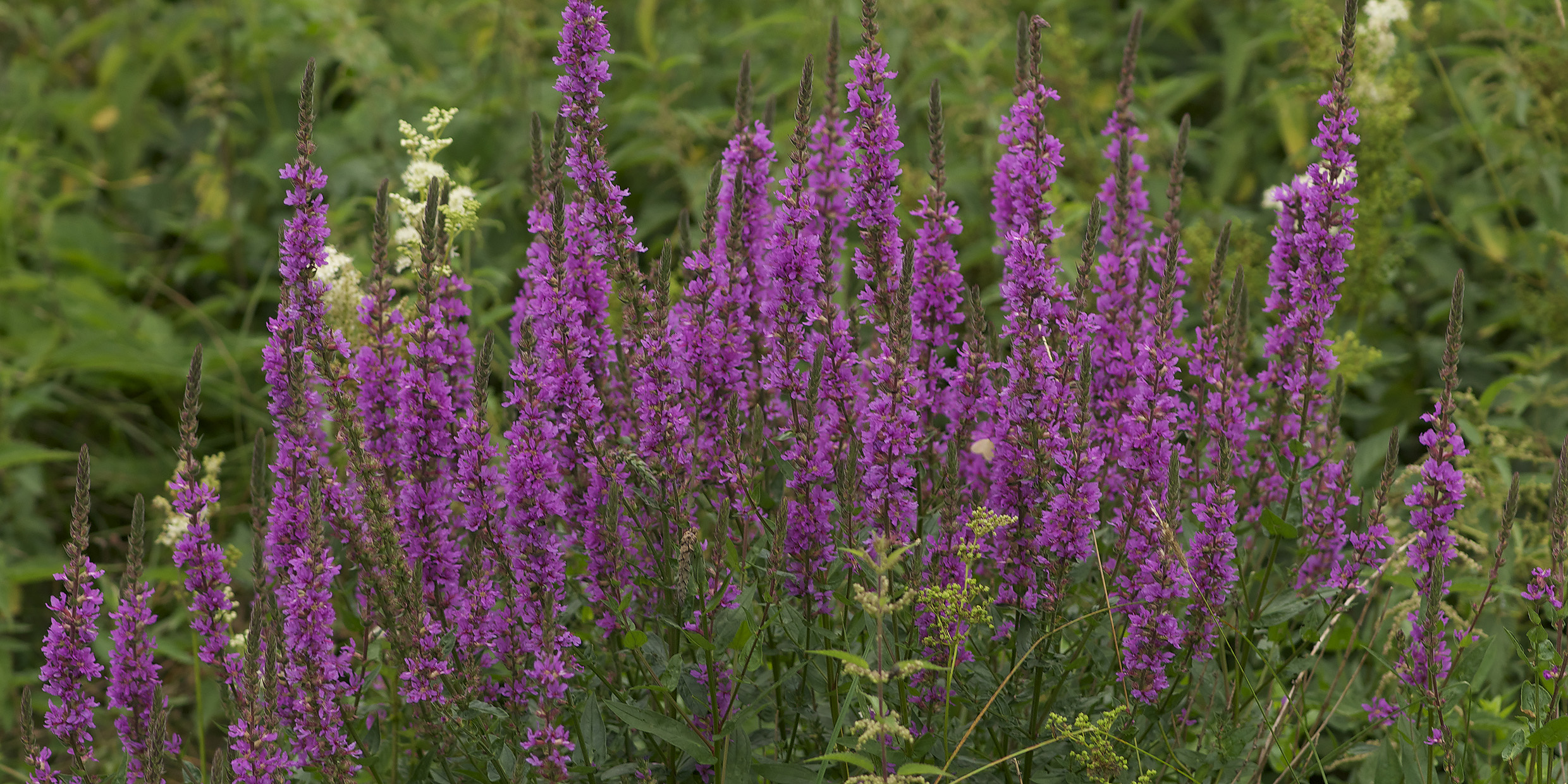Originally published 29 September 1997
One person’s weed is another person’s miracle.
I was thinking this when I was down in a ditch with a magnifier examining the flowers of purple loosestrife plants.
I had read in Don and Lillian Stokes’s Guide to Enjoying Wildflowers that this beautiful but pernicious weed has three different arrangements of male and female parts, and I wanted to see them.
The plant’s sexual organs come in three different lengths: short, mid-length, long. These are arranged male-male-female, male-female-male, or female-male-male. All blossoms on any one loosestrife plant are of the same kind.
Now here’s the clever thing: A plant can only be fertilized when pollen from a male part lands on a female part of the same length. This means a plant can never fertilize itself, because only a different plant will have a male part of the same length as the female part.
This guarantees cross-pollination between plants, which confers distinct evolutionary advantages. Cross-pollinated plants are often better adapted to survival and reproduction than either parent, and they avoid the genetic deterioration that sometimes results from inbreeding.
As I scrambled about in the ditch, examining blossoms, I marveled at the scientific work that must have been necessary to discover and confirm the purple loosestrife’s curious reproductive strategy. There remains an even bigger untold story, of the exquisite molecular chemistry that regulates fertilization, and how that molecular chemistry is controlled by genes. The lock-and-key fit between loosestrife sperm and egg must be a thing of almost unbelievable subtlety and refinement.
And the big, big question is how such cleverness in nature comes about. That such refinement of design could have resulted from random mutations and adaptation to environment by natural selection seems, well, incredible.
All of which brings to mind a sharp exchange of views on Darwinian theory that took place this past summer in the New York Review of Books.
The eminent Harvard evolutionist Stephen Jay Gould fired the opening salvo with a two-part broadside against what he calls “Darwinian fundamentalism,” the notion that adaptation to environment is the be-all and end-all of evolution.
His specific targets are British biologists John Maynard Smith and Richard Dawkins and Tufts University evolutionary philosopher Daniel Dennett. In particular, Gould lashes Dennett for what he construes to be a muddle of misrepresentations in Dennett’s latest book, Darwin’s Dangerous Idea.
Gould is one of the best prose stylists among scientists, and in these essays he wields his considerable (sometimes irascible) talent against those biologists and philosophers who — according to Gould — manage to out-Darwin Darwin. Dennett, in particular, must wonder what sin he committed to warrant such a vigorous public lambasting.
Dennett is an eloquent spokesman for the view that Darwinian adaptation is, in principle, sufficient to explain the staggering diversity and complexity of life, including, for example, that instrument of consciousness, the human brain.
Gould does not deny the power of adaptation, but insists that natural selection is not the whole story, and that other natural principles must be evoked to explain the panoply of life. For example, Gould emphasizes the roles of accident and contingency in evolution. He draws attention to the tendency of organisms to evolve by fits and starts — the theory known as punctuated equilibrium. And he thinks that many useful characteristics of organisms are not adaptations at all, but incidental by-products of natural selection.
What surprised many readers of Gould’s essay in the New York Review was the vehemence with which he defended his views against that of his opponents. Dennett countered with a strongly felt rebuttal letter, which was itself blasted by Gould. Scientists have a reputation for restrained, unimpassioned discourse; here were two luminaries of evolutionary theory whacking away at each other in a very public forum.
Gould and Dennett are big boys; they can take their lumps. Meanwhile, us folks in the bleachers wonder what all the fuss is about. We understand that Darwinian adaptation has proved its preeminence as a way of explaining the diversity of life. We accept that evolution moves in fits and starts, and that contingency — say, the impact of an asteroid — can set the stream of life flowing in new directions. We know that some features of organisms are not easily accounted for as optimal adaptations to environment. And we are open to the possibility that natural selection might not be the whole story.
We have the feeling that Gould’s and Dennett’s differences are a matter of emphasis rather than substance, and that their combined talents might be better directed against creationists. In any case, the adequacy of the Darwinian agenda for explaining the diversity and complexity of life will not be decided in the pages of the New York Review of Books. It will be decided by careful experiments and observations in the field and laboratory, supplemented by computer simulations, and reported dispassionately in peer-reviewed scientific journals.
In other words, the purple loosestrife — and millions of other living organisms — will instruct us. Meanwhile, for all our personal incredulity, and for all Gould’s public grousing, the adaptation of organisms to their environment by natural selection remains, hands down, the best scientific game in town — a conclusion that even Gould would likely affirm.



